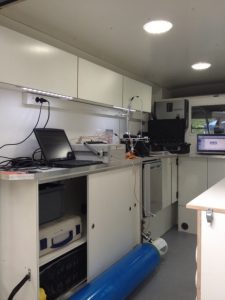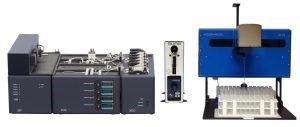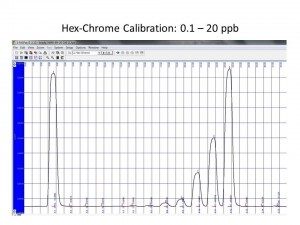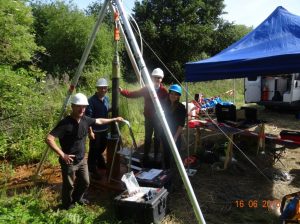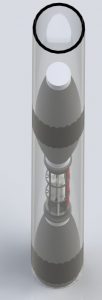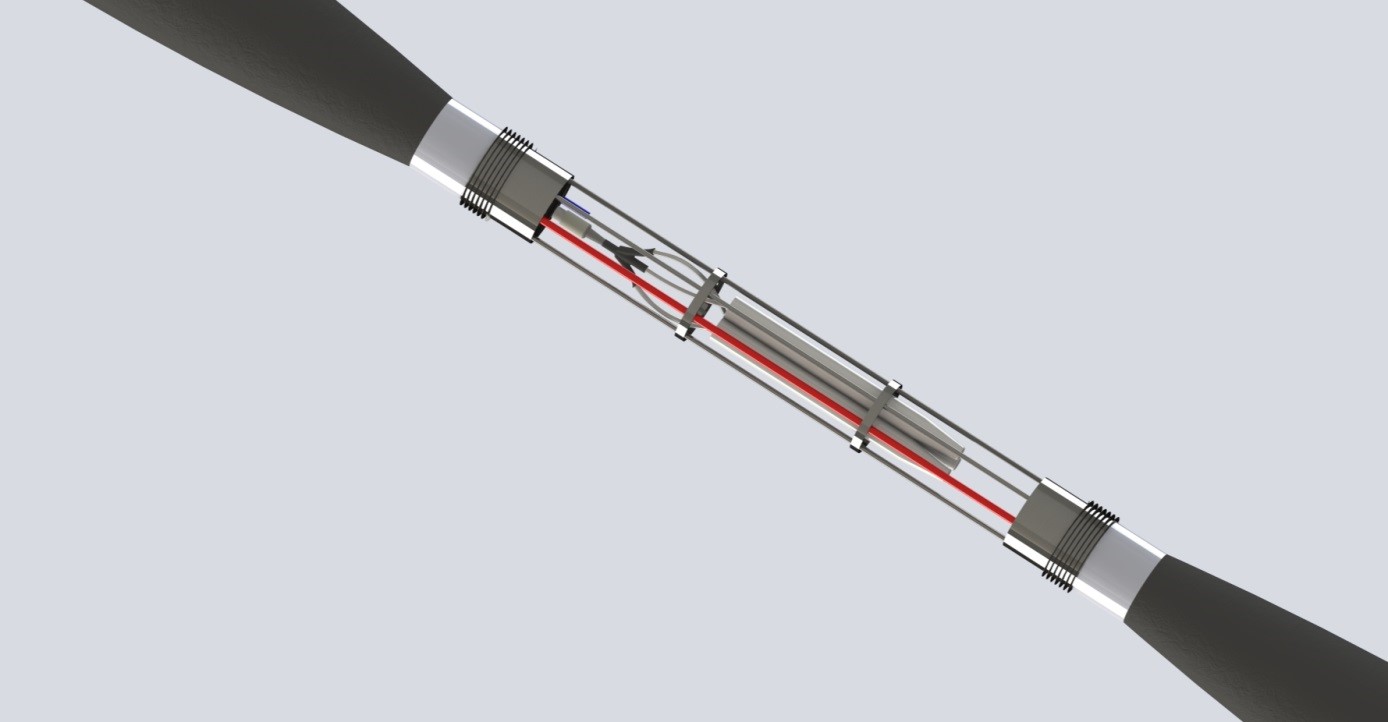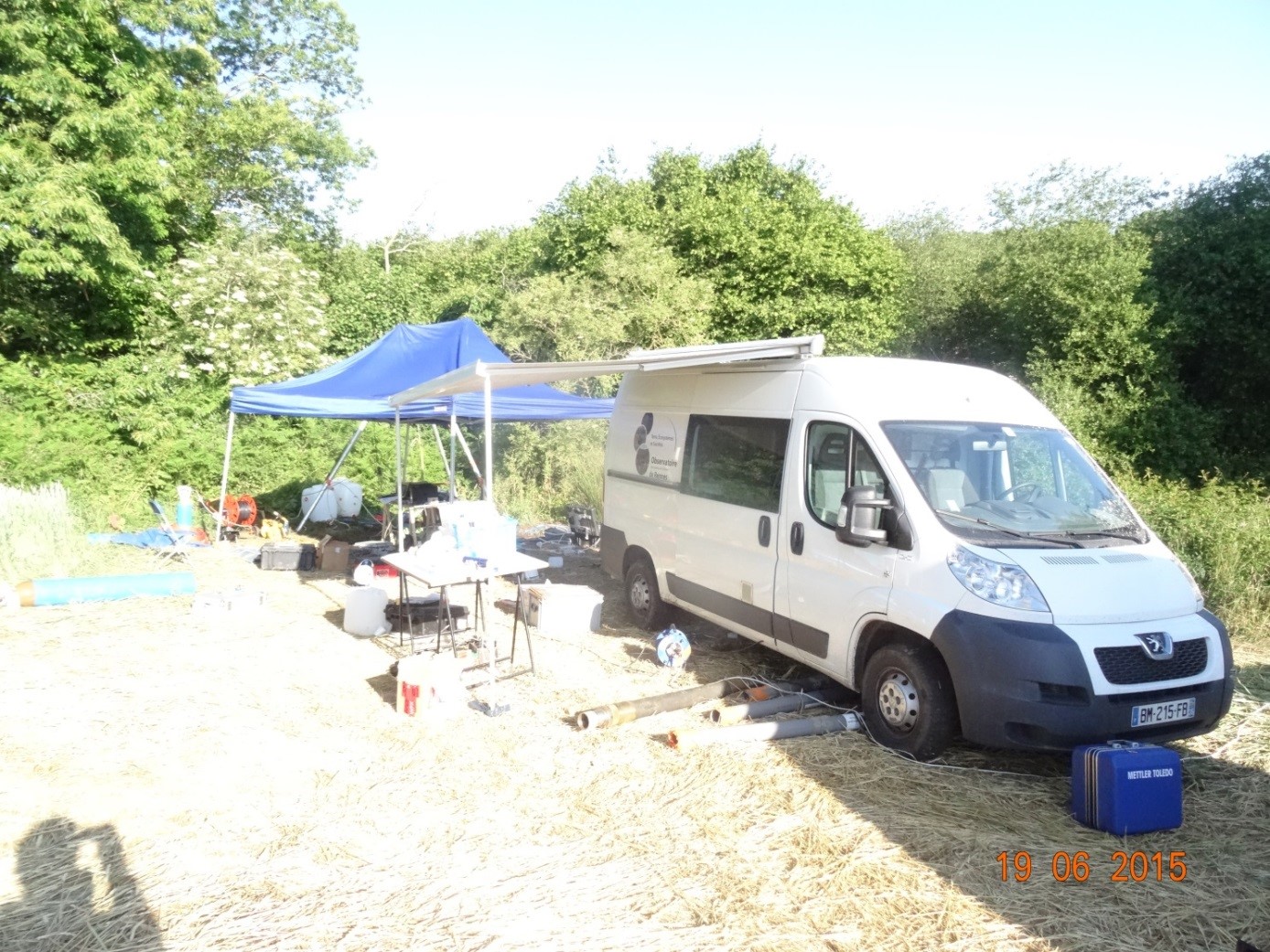Task 7.3: Tracer test
The objective of WP 7.3 is to develop new experimental methods to characterize reactive transport processes in situ. This includes the design of a mobile laboratory to measure the concentrations of tracers and reaction products, a packer system for a precise control of tracer injection, and innovative tracers for the characterization of microbial processes involved in biogeochemical reactions.
New experimental methods
Mobile Laboratory
The mobile laboratory is a 4×4 truck equipped with continuous flow analysers for dissolved silicates, phosphates, iron, ammonium, nitrates and nitrites concentrations. These analysers, based on the principle of colorimetry, allows measuring six parameters simultaneously at a frequency of 40 measurements per hour. It makes it possible to meet the needs of tracing experiments and to monitor several days in boreholes or in river. An integrated filtration system will meet the analytical quality criteria required for this type of analysis.
The mobile laboratory is organized in a modular way. It can thus accommodate various instruments such as devices dedicated to dissolved gases (WP 8.1).
- A mobile laboratory set up in the field as part of a tracing test.
- The water flows between the boreholes is pumped and analyzed continuously in the truck.
On-site continuous flow analyzer:
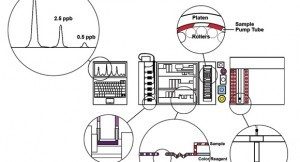
Development of field analyzer (laboratory truck) of dissolved major salts (Nitrates, nitrites, silicates, phosphates, iron, etc.).
Instrumented packer system
The packer system will isolate an observation cell of about 1 meter in a borehole for controlled injection and pumping of reactive tracers and measurement of physicochemical parameters such as temperature, pressures, conductivity, dissolved oxygen concentration, fluorescence, by the installation of sensors in the cell. The measured signals are transmitted to the surface in real time and processed by an acquisition unit.
- Installation of the packer system in drilling for the characterization of a microbial reactivity hotspot at Ploemeur (H +) site
- 3D view of the instrumented packer prototype in development
Innovative tracer
We develop an innovative tracer to measure microbiological activity in situ. This is Fluorescein Diacetate (FDA). This molecule becomes fluorescent when it is degraded by microorganisms. The resulting degradation product can be monitored at high frequency by a fluorimeter. The kinetics of the fluorescence appearance makes it possible to evaluate the microbiological activity of the medium investigated.
Field campaigns
Several field campaigns were carried out within the framework of this task:
- December 2016: conservative and reactive tracing in drilling at Ploemeur site (H+)
- November 2016: hydrochemical monitoring in the river (ZA Pleines-Fougères)
- November 2016: hydrochemical monitoring and gas profiles at Ploemeur site (H+)
- June 2016: reactive and conservative tracing on Naizin site (RBV)
- August 2016: first reactive tracing FDA on the Beaulieu university site (Rennes)
- February 2016: campaign for hydrochemical measurements at Ploemeur site (H+)
WP leader: Tanguy Le Borgne
Contacts: Tanguy Le Borgne, Thierry Labasque, Nicolas Lavenant



